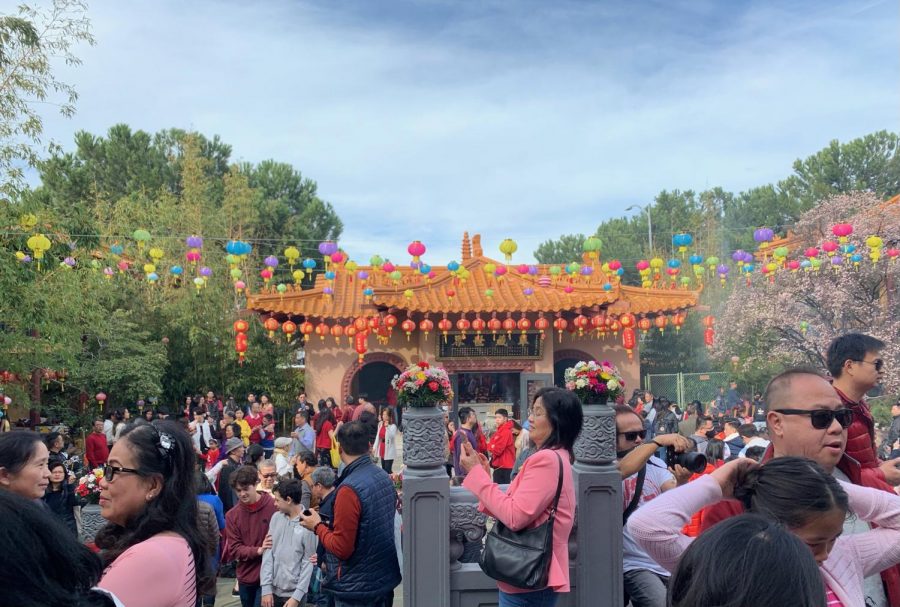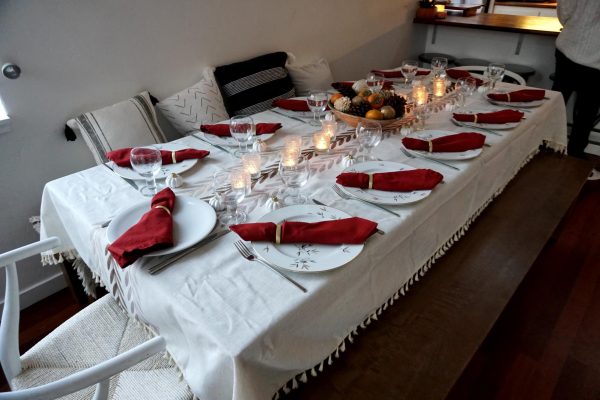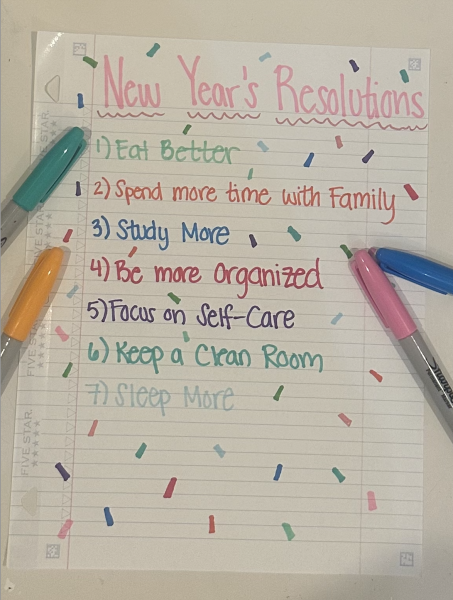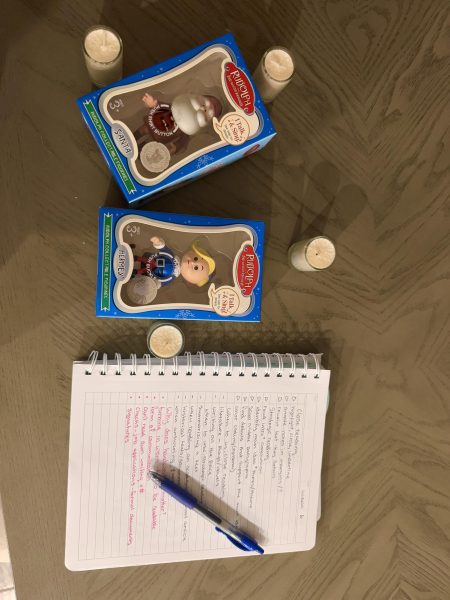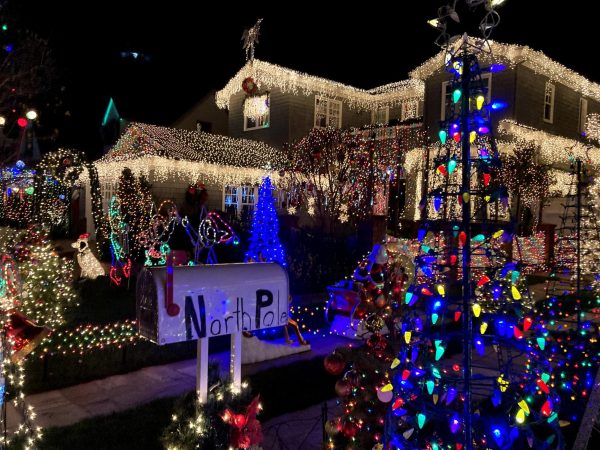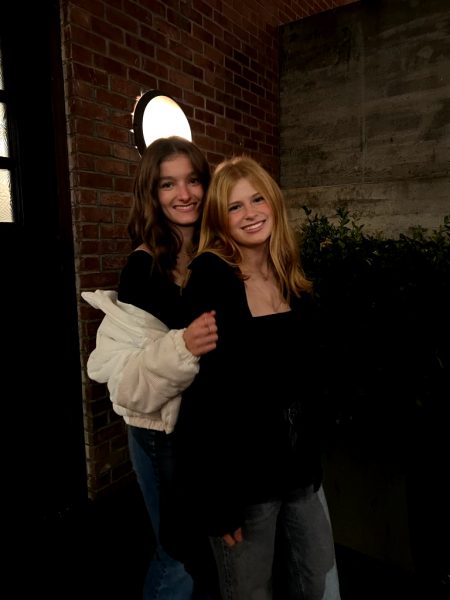Celebrating Chinese New Year
The Catalyst / Lynne Pan
People go to the local Chinese temple during the New Year time.
Chinese New Year, also known as Lunar New Year or the Spring Festival, celebrates the new year on the Lunar Calendar, which is based on the monthly cycles of the Moon’s phases. As of February 12, this Chinese New Year has taken us into a year of the Ox and celebrations will last for up to 15 days.
Beyond the traditional meals and modern fun, Chinese New Year has thousands of years of history. It originated from the Shang Dynasty, which occurred around 1600 BC to 1046 BC, and gradually emerged into the celebration we know today. A common origin story of Chinese New Year is the legend of a monster named Nian. Whenever it is the eve of Chinese New Year, Nian comes out and attacks the village. As time goes on, people figure out that Nian is afraid of the color red and firecrackers. In order to protect themselves and prevent destruction, people wear and decorate their homes red, and set off firecrackers during the New Year period.
When NDB Junior, Amanda Tam, was asked about her own experiences with Chinese New Year, she explained what makes this holiday so special for her. “For Chinese New Year, usually my parents will buy some fancy Chinese dish to bring home and eat,” she said.
Over time, the New Year has developed into the most important Chinese festival for spending time with family and visiting other relatives. It is also a time for people to hold sacrificial ceremonies to honor gods and ancestors at the beginning of each year. People use some food as offerings, and usually each person takes three incenses when worshiping. According to the traditions, people would clean up the house to get rid of bad luck, give children red envelopes, and more.
“My family usually does red envelopes too and of course I’m excited for that. And then we say Happy New Year to each other in Chinese. ” Tam continued.
Sometimes, the customs in different regions are different during the celebration. A common tradition of the New Year is that people would make dumplings together. A coin is then hidden inside one of the dumplings, and whoever finds it is said to be extra lucky that year.
NDB sophomore Jennifer Jin, an international student from China, shared her family’s tradition saying, “My family’s New Year special custom is to eat tangyuan. Tangyuan is a kind of special Chinese food. It is made of glutinous rice, and people usually fill it with fillings, only when the first bell of the New Year rings, eat a tangyuan, so that the children can grow up healthily, and the adults can have a happy year.”
During the Chinese New Year, there are always New Year parades in Chinatowns across the Bay Area, especially San Francisco. In school, NDB and Serra typically hold celebration events for the students as well.
“Normally, we would work with our dining hall the chef’s to cultivate a complete menu for the day celebrating. We would have the bulletin board and the hallways decorated. We would have events and activities organized by the students. But of course because of the pandemic, instead, we have worked on a presentation, ” said Gillian Hegarty, NDB associate director of international students.
This year, NDB has made up presentations and videos of the Chinese New Year. Students talk about their favorite parts of the holiday, the history and myths, as well as the symbols and sayings. Serra High School is holding movie night and a virtual event by the Multicultural Club, as well as a Lantern Festival on February 24.
“As an immigrant from Taiwan, I think being a part of a community is to appreciate and respect different ethic groups and their cultures,” said Serra High School Mandarin teacher Julie Chen. “I have been the moderator of Serra Multicultural club for many years. One of our goals is to promote multicultural awareness and to help students to have a global mindset. I usually would encourage my students to go to Chinatown and explore.”
The Chinese community is very excited to celebrate the year of the Ox in 2021.
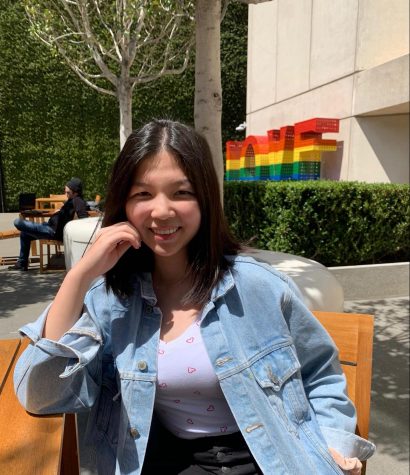
Lynne Pan is a sophomore at Notre Dame, and this is her first year serving as a Staff Writer for The Catalyst. She is excited to write for NDB newspaper.
Lynne...

